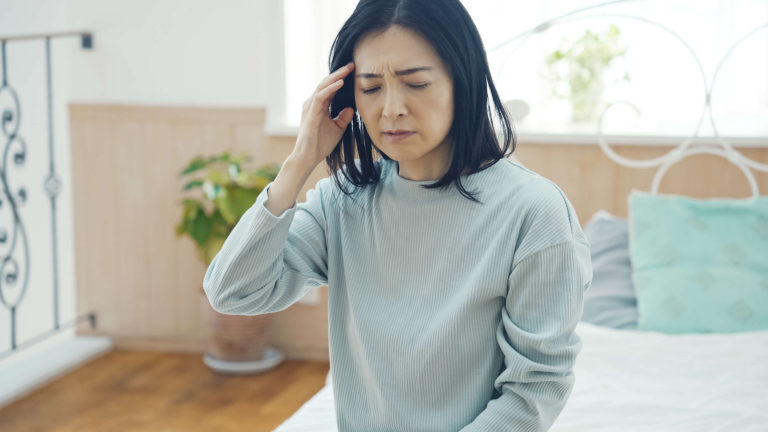Adrenal Fatigue.
Adrenal fatigue gets a lot of attention in the health media these days, at least within the functional and integrative medicine worlds. If you search for adrenal fatigue online, you’ll usually see a bullet point list of every symptom that you could possibly ever experience, so it’s very nonspecific. Common signs of low cortisol include fatigue, salt cravings, feeling “wired but tired”, brain fog, inability to handle stress, low blood pressure, and joint pain. Add to that the overlap in symptoms with sex hormone imbalances and it’s a recipe for confusion in perimenopausal women.
But is adrenal fatigue REAL? And if it’s not, what is going on?
The term adrenal fatigue implies that our precious adrenals are fragile organs that are subject to failure. Nothing could be further from the truth. The adrenals are powerhouses that crank out stress hormones and androgens (DHEA/testosterone) our whole lives. In perimenopause and menopause, they also begin to shoulder the burden of hormone production after the ovaries go into retirement.
Proponents of the idea of adrenal fatigue will suggest that it affects hundreds of millions of people around the world and may be at the root of most modern diseases. There are three primary problems with the adrenal fatigue hypothesis. First, most people with so-called adrenal fatigue don’t have low cortisol levels; remember, most of us are living high-stress lives. Second, even when cortisol is low, it’s rarely because the adrenals are fatigued and unable to produce it. Third, adrenal fatigue as a concept isn’t supported by our current science.
Most people don’t have low cortisol.
Adrenal fatigue is often diagnosed by using a saliva cortisol test, and the cortisol that’s measured in saliva is in the unbound or free form. This means it’s not bound to a protein carrier in the bloodstream. The free portion is the most potent form of cortisol, but it only represents about 3–5% of the total cortisol in the body at any given time. The rest of the cortisol is cleared by several metabolic pathways before it’s excreted in the urine. Saliva testing misses measurement of this metabolized portion which actually is the marker of overall production.
It’s more common when people have low free cortisol for them to have either normal total cortisol or even high total cortisol. Dried urine (DUTCH) test shows both free and metabolized cortisol. This is important because there are interventions that can be used to keep more of the cortisol in the free (active form).
When cortisol is low, it’s rarely because the adrenals are tired and unable to produce it.
If you have low cortisol, it’s more likely that the body has slowed down the stress response axis from your brain to your adrenals to put the brakes on you. When we’re exposed to stress over a long period of time, the body has some feedback mechanisms. It uses these mechanisms to protect us from the effects of high cortisol. You can read more about that here. Your body decreases the sensitivity of some receptors that are involved in this pathway. It is a protective mechanism. This downregulation of the feedback loop ends up leading to a decreased ability to produce cortisol in the face of future stress. So it’s a brain thing and has nothing to do with the adrenals’ ability to make cortisol.
Science doesn’t support the adrenal fatigue concept.
If you do a literature search in PubMed (a large body of scientific studies) and type in “adrenal fatigue,” you’ll find about 10 results. But if you search for the “hypothalamic pituitary adrenal axis,” you’ll find about 18,000 results. It is clear that there’s tons of research connecting stress and disease. But again, it’s because of the body’s specific regulatory mechanisms that govern the availability of cortisol, not because the adrenals can’t produce it.
Why understanding this matters.
All of this talk about terminology is not just splitting hairs. If a woman is incorrectly diagnosed with adrenal fatigue because testing is done using the incorrect method or the timing of the test is off, there’s a good chance that the management strategy may do more harm than good. Treatments like hydrocortisone or licorice that raise free cortisol could worsen the situation if used inappropriately.
For the vast majority of us, our “adrenal fatigue” is simply a mismatch between what we truly desire in our lives and the stress we are under. We were designed to live eating nutrient-dense food with infrequent activation of the stress response. We also need plenty of exposure to sunlight and connection with nature. But most of us actually live with our sympathetic nervous systems in overdrive. This is due to too much exposure to electronic screens, crap food, and a non-stop lifestyle that we think is perfectly normal. This doesn’t work.
How to get to the root cause of your symptoms:
I use the DUTCH urine test in my practice as one tool to help my clients determine the root cause of their symptoms. With those results and information about their lifestyle, I help create a customized plan for my clients. This includes suggestions to help them control stress by habit change and supportive supplements as appropriate. Lifestyle changes are the foundation of healing the HPA axis. No amount of supplements can support a client out of a lifestyle that needs some serious examination. The good news is that even though it’s difficult, HPA healing is possible with a commitment to a different approach. You can get more information about what I offer at www.drannagarrett.com/connect-the-dots.
Dr. Anna Garrett is a menopause expert and Doctor of Pharmacy. She helps women who are struggling with symptoms of perimenopause and menopause find natural hormone balancing solutions so they can rock their mojo through midlife and beyond. Dr. Anna is the author of Perimenopause: The Savvy Sister’s Guide to Hormone Harmony. Order your copy at www.perimenopausebook.com.
Dr. Anna is available for 1-1 consultation. Find out more at www.drannagarrett.com/lets-




